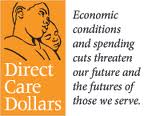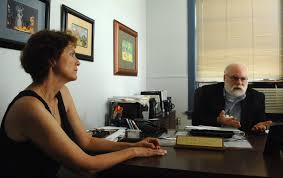 Welcome to O.D. Fridays at DonorDreams blog. Every Friday for the foreseeable future we will be looking at posts from John Greco’s blog called “johnponders ~ about life at work, mostly” and applying his organizational development messages to the non-profit community.
Welcome to O.D. Fridays at DonorDreams blog. Every Friday for the foreseeable future we will be looking at posts from John Greco’s blog called “johnponders ~ about life at work, mostly” and applying his organizational development messages to the non-profit community.
In a post titled “Survival Is Not Mandatory,” John talks about how change is occurring all around us all of the time. Organizations need to make the decision to adapt to those changes or risk going out of business.
On Wednesday afternoon, I received the following email in my inbox from a local non-profit organization with whom I’ve worked with and supported over the last 13 years.
A Farewell Thank You to Larkin Center Supporters
The Larkin Center has been a valuable part of the Elgin area for over 117 years. Unfortunately, the Center has experienced financial challenges at a time when demand for its services has increased. We have been in discussions with several strategic partners over the last 18 months to secure the long-term future of the Center.
As of last Friday, the effort collapsed and we are working with appropriate state agencies to transfer contracts and transition our clients as a result, it saddens us to announce that the Center will no longer be able to sustain itself after Friday, October 18, 2013.
The Larkin Center clients and staff would like to thank the many individuals and organizations that have supported our mission throughout the years and have truly made a difference in the lives of our clients.
Larkin Center has adapted to all of the changes throughout the years. They were founded more than 100 years ago as an orphanage. Over the course of time, orphanages disappeared from our communities, and Larkin Center evolved into an agency offering residential services to children who had trouble surviving in a state-run foster care system.
 As the years passed, Larkin Center added more services including a school for children struggling with behavior disorders and counseling services for adults.
As the years passed, Larkin Center added more services including a school for children struggling with behavior disorders and counseling services for adults.
It is obvious to me that Larkin Center’s staff and board understood that “survival is not mandatory,” which is why they kept evolving and changing with the times. I think it is this realization that makes this closure so difficult to swallow.
Is it possible that there comes a time when adapting to change and evolving is not possible? Do organizations have a life span much like human beings?
The sadness of this moment makes it impossible for me to go down this road and contemplate the answers to these questions.
Instead, I want to celebrate. That’s right. You heard me correctly.
 There will be lots of news coverage about the “failure“. Many people will weigh-in with what they think went wrong and what could’ve and should’ve been done differently. There might even be a victory lap taken by a few Elgin city council members who openly fought with Larkin Center because they didn’t think “those kids” belonged in our community.
There will be lots of news coverage about the “failure“. Many people will weigh-in with what they think went wrong and what could’ve and should’ve been done differently. There might even be a victory lap taken by a few Elgin city council members who openly fought with Larkin Center because they didn’t think “those kids” belonged in our community.
I won’t touch any of these topics with a ten foot pole. At least not today.
Instead, I urge all of you to take a moment to think about the heroes who fought to the very end to save Larkin Center.
When I think about the countless number of volunteer hours invested in strategic planning and exploring merger possibilities over the last 18 months, I want to honor those efforts.
When I think about the Larkin Center staff who persevered through furloughs and late paychecks because they believed in saving this agency’s mission, I want to honor those efforts.
 When I think about the donors who invested in efforts to save this organization in the final months and years of its life, I want to honor those efforts.
When I think about the donors who invested in efforts to save this organization in the final months and years of its life, I want to honor those efforts.
When I think about the tens of thousands of children and adults (if not more), whose lives were touched and changed by Larkin Center, I want to honor those efforts.
There will be plenty of time to dissect what happened and learn lessons from Larkin Center, but please join me in honoring the accomplishments and hard work of so many people.
Sigh! As always, John is right . . . “Survival is not mandatory.” But it doesn’t mean we shouldn’t celebrate 117 years of evolution and the will to survive.
You can join me in remembering Larkin Center and honoring the organization, its accomplishments and its volunteers and staff members by recalling a memory and sharing it in the comment box below.
Here’s to your health (and continued evolution)!
Erik Anderson
Founder & President, The Healthy Non-Profit LLC
www.thehealthynonprofit.com
erik@thehealthynonprofit.com
http://twitter.com/#!/eanderson847
http://www.facebook.com/eanderson847
http://www.linkedin.com/in/erikanderson847



